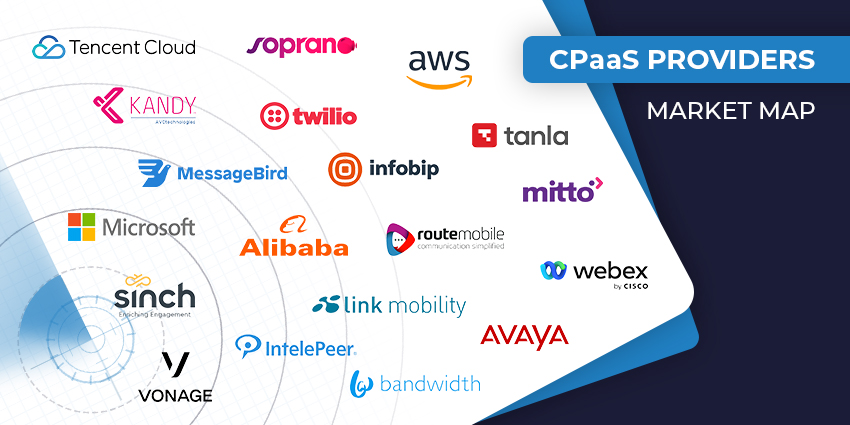Bandwidth provides traditional carrier services as well as a portfolio of APIs for voice, messaging and 9-1-1 access to service providers throughout the United States like Microsoft, Google, RingCentral, Zoom, and more. Having cracked the communications provider market with their CPaaS style offering, Bandwidth is officially going direct to the enterprise.
I spoke to Caitlin Long, Product Marketing Manager at Bandwidth, to get the lowdown on their direct offering for enterprises.
Differences between direct and wholesale models
One major difference between the wholesale and direct packages is around 9-1-1 calling. With the enterprise direct offering, 9-1-1 is a major piece of the solution with regulatory and legal implications. Caitlin said “it’s no longer a pieces and parts solution where communications providers can choose to remove the 9-1-1 from our solution. It’s more holistic because we’re serving enterprises directly who have legal obligations to keep their employees safe and connected.”
When Caitlin spoke about an enterprise’s legal implications around 9-1-1 access, I asked whether direct customers saw this as a lesser known item for telephony.
“It depends on the customer and who you talk to. Most corporations are now aware of the need for compliance, but aren’t quite sure how to get there”
Caitlin said the 9-1-1 compliance conversation is lengthy but highlighted Kari’s Law specifically. Kari’s Law states that organisations with multi-line telephone systems must have a configuration that permits users to directly initiate a call to 9-1-1 without dialling any additional digit, code, prefix, or suffix. There are also associated legal implications regarding the obligation for an organisation to be able to provide accurate location information at time of call, which, as Caitlin noted, is becoming a bigger issue for organisations they continue to migrate their communications and telephony into the cloud and expand their distributed workforce.
Support
Moving from a wholesale to an enterprise model typically requires a big change in the level of support offered. However, Caitlin told me that Bandwidth’s target market, like those in the Fortune 1000, know what they are doing, as sophisticated IT departments are part and parcel of larger enterprise’s infrastructure.
Transition from wholesale to enterprise
When I asked Caitlin what the biggest hurdles in developing an enterprise model were, she listed the usual suspects like internal enablement and product activation; however, with the entry into a net-new market, building brand awareness and has been the biggest focus. One of the ways Bandwidth is looking to do that is leveraging their existing presence as the cloud-native carrier powering a large majority of market leading UCaaS, CCaaS, and Conferencing platforms.
“We made a huge splash this year at Enterprise Connect, and almost every time I talked to a large enterprise prospects I found they were using our network without even knowing it”
This may be because Bandwidth powers Microsoft Calling plans embedded within both Teams and Skype for Business as well Google Voice, G Suite, Cisco BroadSoft, Genesys PureCloud, RingCentral, 8×8, Mitel, BlueJeans, Zoom, and Cisco Webex.
Bring your own carrier

Part of Bandwidth go-to market strategy for their direct to enterprise offering, is positioning themselves as the natural selection when customers, particularly ones of the aforementioned vendors, choose to participate in a BYOC or “Bring Your Own Carrier” program. BYOC, or Direct Routing in the Microsoft world, enables you to choose the best carrier for your business to plug into your respective contact centre or unified communication platforms. Today you can choose Bandwidth as your carrier of choice for platforms like Microsoft Skype for Business, BroadSoft, Genesys, and more.
Understanding user requirements in the enterprise world is one of the principles behind Bandwidth’s “Bring Your Own Carrier” campaign. Caitlin explained that the decoupling of carrier services and telephony platform enables several benefits. These include:
- Greater Control and Visibility
- Work directly with the network provider
- Link out to business intelligence tools
- Bill more accurately to cost centres
- Control IP failover
- Manage disaster recovery
- Cost Savings
- Preferred pricing from going direct to the carrier
- Increased savings and scalability by moving from TDM & PRI to SIP
- Great Agility
- Order, trigger ports, provision, and manage numbers in real-time
- Self-serve to set-up and teardown employee workstations as needed
- Integrate messaging, voice, and 9-1-1 access via API calls
- Simplified 9-1-1 support for cloud-based environments
- Easy integration with leading UC and PBX platforms
- Reduced risk of litigation and regulatory non-compliance
Bandwidth in the marketplace
I asked Caitlin where Bandwidth will sit in both wholesale and enterprise markets. Unsurprisingly, Twilio got a mention when competing in the wholesale CPaaS space.
In a more enterprise market, Caitlin mentioned vendors like Level 3/CenturyLink, Verizon and AT&T. “These are the legacy carriers with direct relationships that are providing on-premises telephony services. Often, these types of company include their internet or video services so enterprises are more locked in to one provider”.
Caitlin went on to comment on her reflection that the larger the enterprise, the more likely they are to purchase different parts of telephony from different providers to meet the unique needs of their business demands.
What’s included in Bandwidth’s enterprise package?
The Bandwidth services are broken down into three areas:
Voice
- SIP trunking services for VoIP-enabled desk phones, softphones, and more
- Toll-Free
- Line features such as Directory Listing, CNAM, & LIDB
- Integrated phone number management functionality including ordering, porting, and instant provisioning within your own applications
9-1-1 services
- Highly reliable 9-1-1 call routing for a distributed, mobile workforce
- Delivers pinpoint user location data including building, room or floor
- Automated location provisioning and real-time address validation
Messaging
- SMS and MMS APIs allow enterprises to build texting functionality into their CRMs for customer care, or employee collaboration as well as alerts, reminders, notifications, or marketing communications
- SMS-enabled local numbers, high-volume capable toll-free numbers, and constant innovation allow for any modern enterprise use case with ease
Caitlin also informed me that additional 9-1-1 capabilities for organisations lacking SIP infrastructure will be added as their offering grows over the next year which will be particularly attractive to the IoT, SOS application, and emergency application spaces.
The Bandwidth team will be at Cisco Live June 9-13th. Stop by booth #2536 right across from the Cisco Solutions Theater to learn more about their Enterprise Telephony offering.






